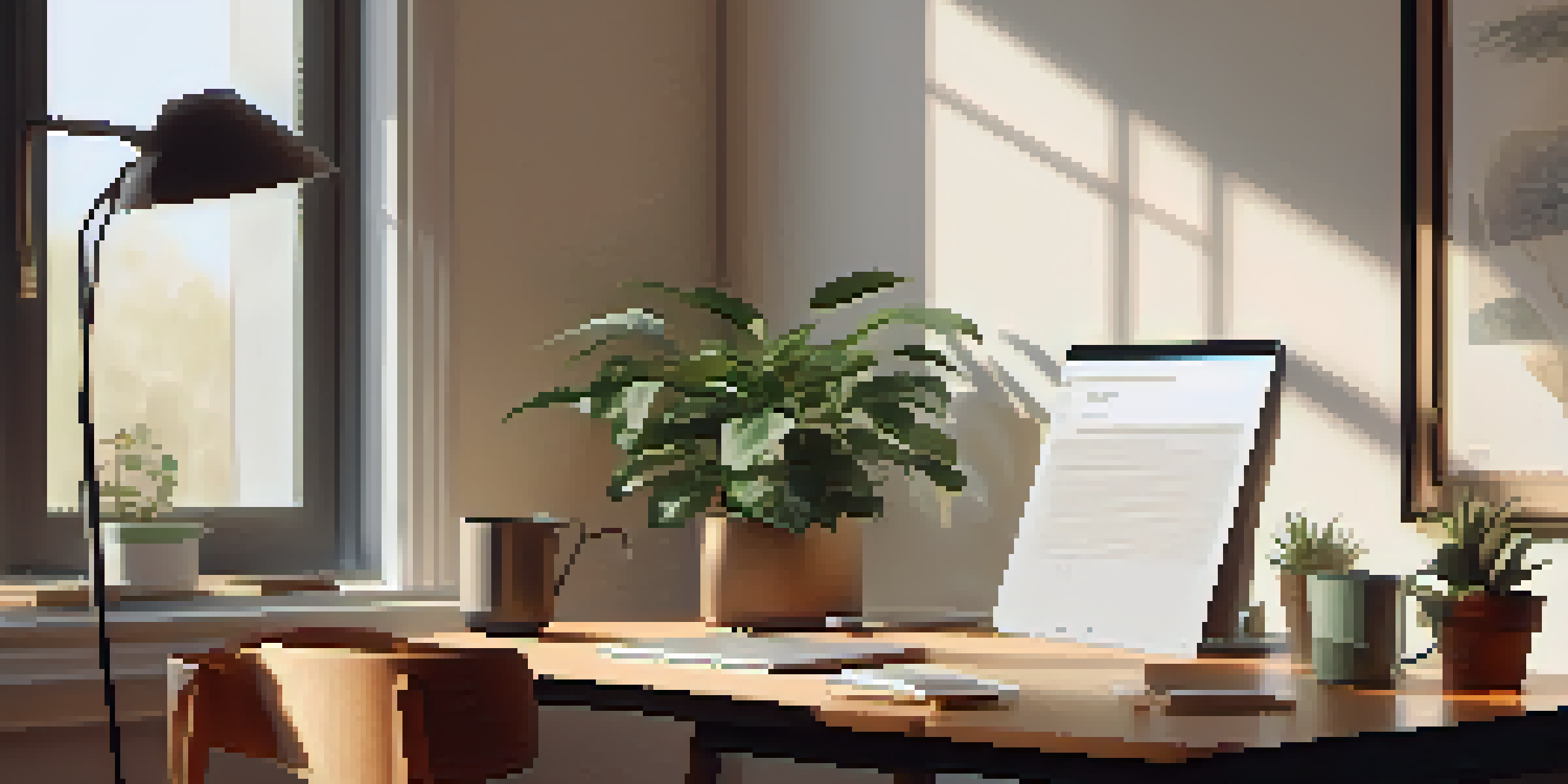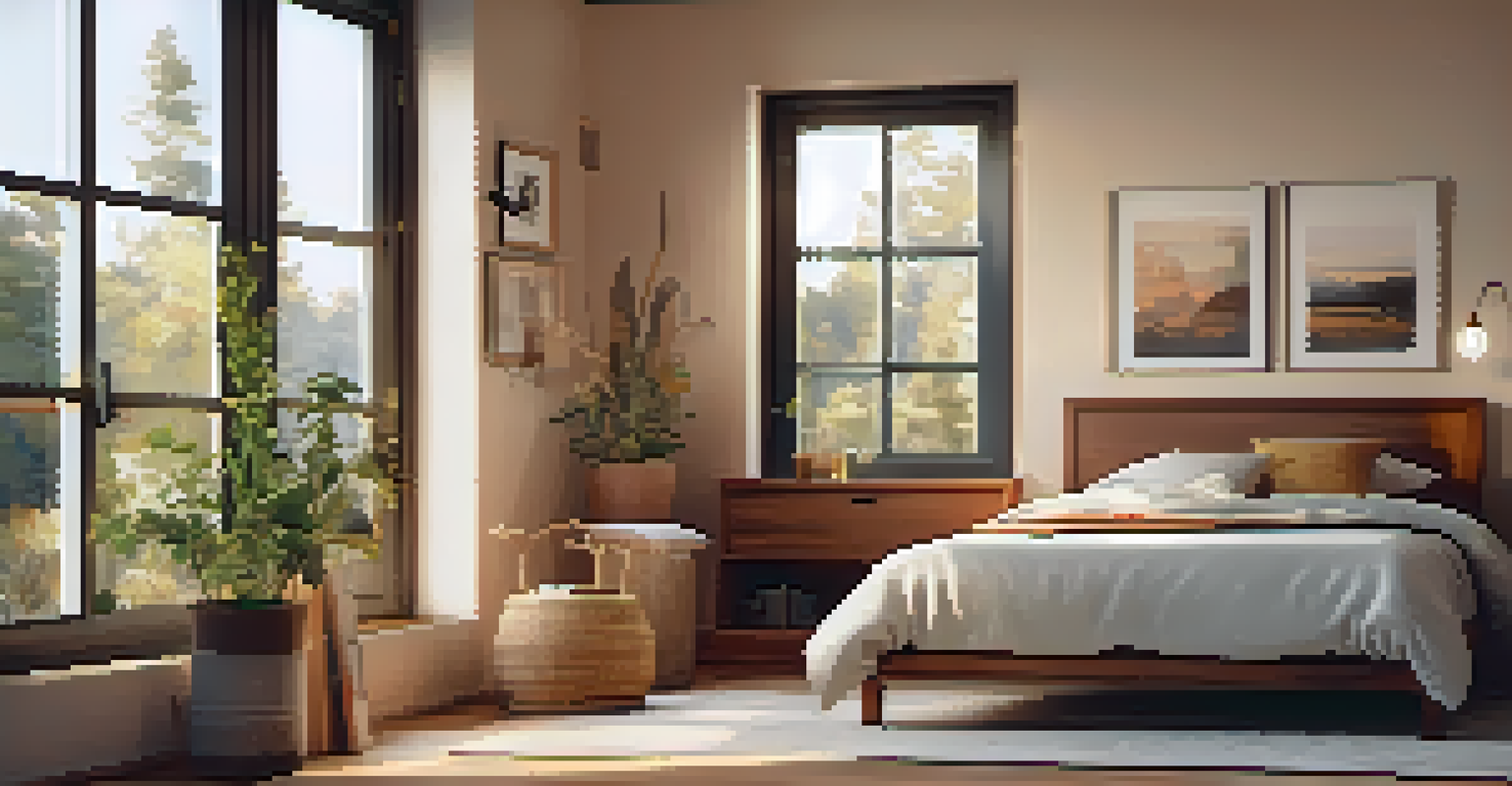The Benefits of Minimalist Technology Use for Mental Health

Understanding Minimalist Technology Use
Minimalist technology use is about simplifying your digital life. It means consciously choosing which tools and platforms to engage with, reducing distractions and mental clutter. By focusing only on what truly adds value, you can create a more peaceful online experience.
Technology is a useful servant but a dangerous master.
This approach encourages you to eliminate unnecessary apps and notifications that can lead to stress or anxiety. Imagine walking into a cluttered room; it’s hard to think clearly. Similarly, a cluttered digital environment can overwhelm your mind, making it tough to focus.
When you embrace minimalist technology, you prioritize quality over quantity. Instead of being constantly bombarded with information, you allow space for deeper thinking and relaxation, which is essential for mental health.
Reducing Digital Distractions
One of the most significant benefits of minimalist tech use is the reduction of digital distractions. Notifications from numerous apps can create a constant sense of urgency and anxiety. By limiting these distractions, you can reclaim your attention and focus on what truly matters.

Think of it like decluttering your workspace; when your desk is tidy, it’s easier to concentrate. Similarly, a less cluttered digital space allows for clearer thoughts and a calmer mind. You can spend more time on meaningful activities rather than scrolling through endless feeds.
Simplify Your Digital Life
Embracing minimalist technology helps reduce distractions and mental clutter for a more peaceful online experience.
Moreover, by consciously choosing when and how to engage with technology, you can foster a healthier relationship with your devices. This intentional approach can lead to a more balanced lifestyle, where technology serves you, not the other way around.
Enhancing Focus and Productivity
Minimalist technology can significantly enhance your focus and productivity. By using only essential tools, you minimize the chances of multitasking—a practice often linked to decreased efficiency. Instead, you can dedicate uninterrupted time to important tasks.
Simplicity is the ultimate sophistication.
For example, using a single productivity app instead of several can streamline your workflow. When you have fewer tools to manage, it’s easier to stay organized and on track. This simplicity allows your brain to work more efficiently, reducing the mental fog that often accompanies digital clutter.
As a result, you’ll likely find that you accomplish more in less time. This feeling of productivity can, in turn, boost your confidence and overall mental well-being, creating a positive feedback loop.
Encouraging Mindfulness Through Tech Use
Minimalist technology use encourages mindfulness, a practice that has become increasingly important in our busy lives. By being selective about your technology, you create opportunities to engage in the present moment. This mindfulness can reduce stress and improve your overall mental health.
Imagine taking a moment to enjoy a cup of coffee without checking your phone. This simple act can help ground you, making you more aware of your thoughts and feelings. Mindfulness fosters a deeper connection to yourself and your surroundings, promoting emotional balance.
Enhance Focus and Productivity
Using only essential tools minimizes multitasking and promotes efficiency, allowing you to accomplish more in less time.
Incorporating mindful technology habits, such as scheduled tech-free times, can further enhance this practice. By stepping away from screens, you give your mind a chance to recharge and reflect, ultimately supporting your mental well-being.
Improving Sleep Quality
The relationship between technology and sleep is well-documented, with excessive screen time often contributing to poor sleep quality. By adopting a minimalist approach, you can create healthier bedtime routines that promote better sleep. Reducing screen time before bed allows your mind to wind down more naturally.
For instance, replacing late-night scrolling with reading a book or practicing relaxation techniques can signal to your body that it’s time to sleep. This shift not only improves your sleep but can also enhance your mood and cognitive function during the day.
Establishing tech-free zones, like your bedroom, can further reinforce these habits. Creating a peaceful sleep environment free from digital distractions is crucial for mental health, allowing you to wake up refreshed and ready to face the day.
Fostering Real-Life Connections
Minimalist technology use can help foster deeper, more meaningful connections in real life. When you prioritize face-to-face interactions over virtual ones, you nurture relationships that are vital for emotional support. This shift can lead to increased feelings of belonging and happiness.
Think about how often you’ve been in a group setting yet remained glued to your phone. By consciously choosing to engage with those around you, you create memories that enrich your life. These authentic connections can also provide a buffer against feelings of loneliness or isolation.
Foster Real-Life Connections
Prioritizing face-to-face interactions over virtual ones nurtures deeper relationships, enhancing feelings of belonging and happiness.
Moreover, encouraging others to join you in minimizing technology can strengthen your bonds. Shared experiences, whether it’s a hike or a dinner without devices, can cultivate a sense of community and enhance your overall mental well-being.
Setting Healthy Boundaries with Technology
Establishing healthy boundaries with technology is a key component of minimalist use. This means defining when and how often you interact with digital devices. By setting these limits, you create a healthier balance that promotes mental well-being.
For instance, designating specific times for checking emails or social media can prevent technology from encroaching on your personal time. This practice helps you focus on priorities without the constant pull of digital distractions, allowing for a more fulfilling daily life.

Moreover, communicating your boundaries to others can set expectations that further support your mental health journey. When you prioritize your well-being, you encourage those around you to do the same, creating a more mindful and supportive environment.